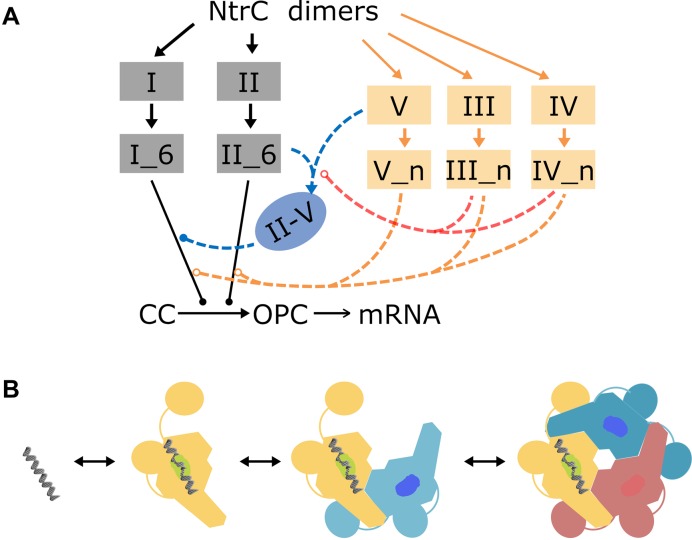Figure 3.
Essentials of the model for NtrC-regulated glnAp2 transcription initiation. (A) NtrC dimers bind to enhancers I and II and low-affinity sites III-V. NtrC hexamers formed at enhancers (denoted by I_6 and II_6) stimulate the transition from the posterior closed complex ‘CC’ to the open complex ‘OPC’. Mainly via the pathway that an NtrC tetramer/hexamer at enhancer II binds to site V, the II-V bridging forms facilitating the enhancer I-mediated transcription initiation (denoted by blue lines). The occupation of low-affinity sites by an NtrC dimer, tetramer or hexamer (denoted by n, n = 2, 4 or 6) at high concentrations increases the DNA rigidity, thus hindering the formation of II-V bridging and association of enhancer-bound hexamers with the closed complex (denoted by red and orange dashed lines). Solid and open circles separately denote the promotion and inhibition of molecular interactions. (B) For each binding site, its state converts stochastically among being vacant, being bound by an NtrC dimer, tetramer or hexamer (dimers in a tetramer/hexamer are differently colored).

